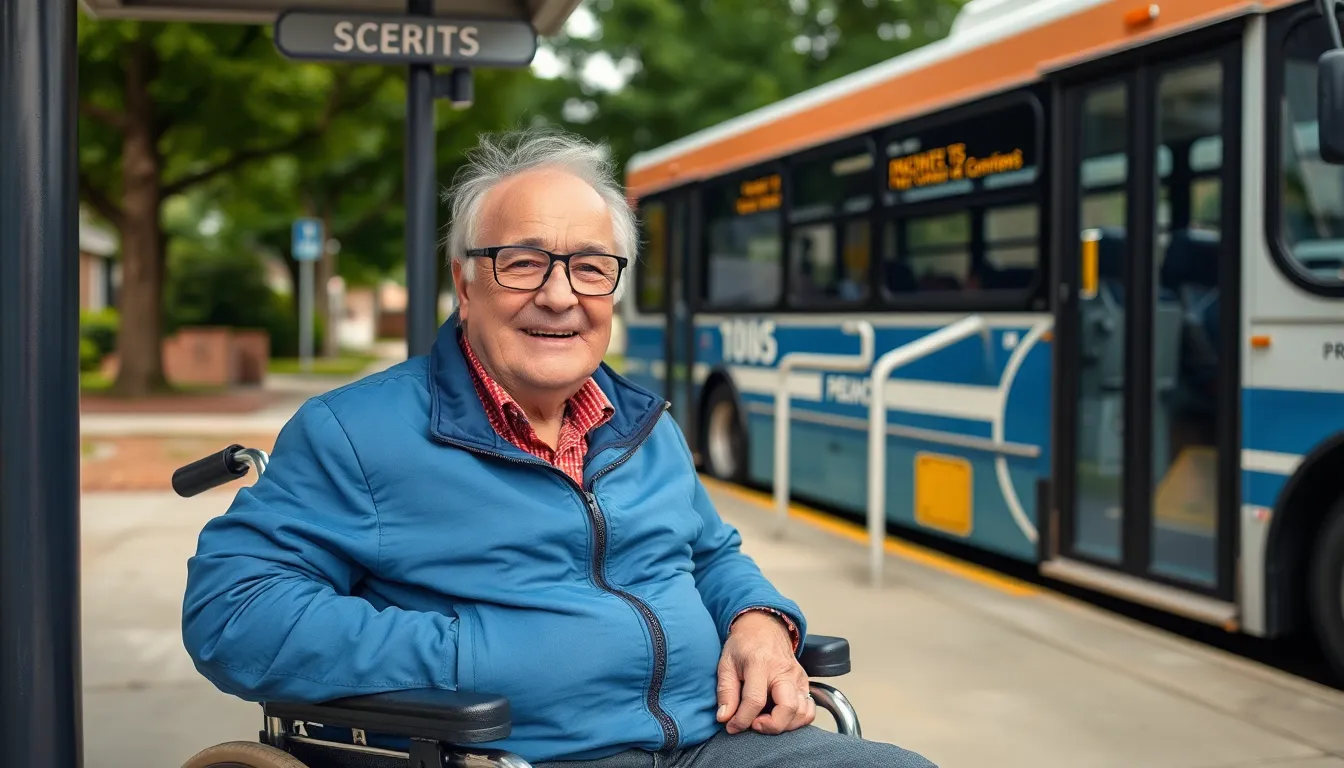Navigating the world of senior transportation can feel like trying to solve a Rubik’s Cube blindfolded. With the golden years come golden opportunities for adventure, but also unique challenges when it comes to getting around. Whether it’s a trip to the grocery store or a visit to the grandkids, seniors often find themselves in a pickle when it comes to reliable transport options.
Table of Contents
ToggleOverview of Senior Transportation
Senior transportation involves various services tailored to meet the unique mobility needs of older adults. Transportation challenges often arise due to health issues, mobility limitations, and the lack of access to public transit. Seniors may struggle to reach essential destinations like grocery stores, medical appointments, or social gatherings.
Transportation services for seniors typically include ride-sharing options, specialized shuttles, and non-emergency medical transportation. These services support independent living by providing safe and reliable transit. Community programs and local nonprofits frequently offer resources for seniors, ensuring they remain connected to their communities.
Public transit systems increasingly recognize the importance of accessibility. Many offer reduced fares for seniors and services designed specifically for individuals with mobility impairments. Additionally, paratransit services supplement regular public transportation, ensuring that seniors can access critical areas.
Telehealth options play a significant role in modern senior care. Virtual appointments reduce the need for transportation while maintaining healthcare access. Yet, some seniors may still require traditional transport for social interactions and recreational activities.
Innovative solutions continue to emerge in senior transportation. Autonomous vehicles and smart technology promise to enhance mobility options for older adults. Local governments often invest in infrastructure improvements to create safer environments for senior travelers.
Identifying reliable transportation resources remains vital. Researching local services and community programs can help seniors navigate their options effectively. Awareness of available resources fosters independence, enhancing the quality of life for many older adults.
Importance of Senior Transportation

Transportation for seniors plays a crucial role in maintaining independence and quality of life. Access to reliable transport options greatly enhances their ability to engage in daily activities and social interactions.
Accessibility Considerations
Finding accessible transportation options ensures seniors can navigate their environments comfortably. Public transit systems increasingly prioritize accessibility features, like ramps and priority seating. Many communities also offer specialized shuttles that cater to mobility limitations. Ride-sharing services now include vehicles equipped for wheelchairs, making them more inclusive. Navigating local resources can help seniors identify the best options. Community programs often provide valuable information and assistance in securing rides.
Health and Safety Aspects
Health considerations greatly influence senior transportation choices. Many seniors face mobility challenges that require safe and accommodating vehicles. Transportation providers are recognizing the significance of training drivers in handling passengers with specific health needs. Safety features in vehicles, like seatbelt adjustments and handrails, enhance security during travel. Regular assessments of transportation services help ensure they meet the health and safety standards essential for older adults. Engaging with appropriate services can mitigate risks and foster a secure travel experience.
Types of Senior Transportation Services
Seniors can access various transportation services tailored to their needs. These options range from public transit to private services and technology-based solutions.
Public Transportation Options
Public transportation offers a cost-effective solution for seniors. Many transit systems provide reduced fares, making travel more affordable. Accessibility features such as ramps and priority seating cater to mobility challenges. Paratransit services, designed for those unable to use regular buses, further enhance access to essential destinations. Seniors should check local transportation agencies for specific services.
Private Transportation Services
Private transportation services accommodate seniors with a focus on comfort and safety. Many companies specialize in non-emergency medical transportation, ensuring timely arrivals for medical appointments. Some services offer door-to-door assistance, which is crucial for seniors with mobility limitations. Several private providers also focus on personalized care during transport, improving the overall experience.
Ridesharing and Technology Solutions
Ridesharing apps increasingly cater to senior users, offering flexible transport options. Some services now feature wheelchair-accessible vehicles to enhance inclusivity. Technology solutions, including ride scheduling through mobile apps, simplify the process for older adults. Seniors should engage with local ride-hailing services to familiarize themselves with helpful features designed for their needs.
Challenges in Senior Transportation
Seniors encounter various challenges when accessing transportation options. These obstacles can significantly impact their independence and quality of life.
Physical and Cognitive Limitations
Physical and cognitive limitations frequently hinder seniors’ ability to use conventional transportation methods. Mobility issues, such as arthritis or muscle weakness, create difficulties when entering or exiting vehicles. Cognitive decline can affect decision-making, making navigation uncertain. Some seniors may struggle with remembering details like schedules or routes, further complicating their travel. Designated services need to address these unique challenges, providing vehicles with accommodations. Additionally, training drivers to assist passengers with these conditions ensures safer and more effective transport experiences.
Affordability Issues
Affordability remains a crucial barrier in senior transportation. Many seniors live on fixed incomes, which may limit their ability to pay for frequent rides. Public transportation fares, while generally lower than private services, can still add up over time. Specialized transportation services often charge higher rates that are difficult to sustain financially. Many seniors prioritize housing and healthcare costs over transportation, leading to limited options. Local governments and organizations must explore subsidies or discounts to alleviate this problem, ensuring that all seniors can access reliable and affordable transportation solutions.
Access to reliable transportation is vital for seniors to maintain their independence and quality of life. As they navigate various mobility challenges, it’s essential to explore the available options tailored to their unique needs. From public transit to ride-sharing services and innovative technology solutions, seniors have more resources than ever to help them get around.
Local communities and organizations play a crucial role in ensuring these services are accessible and affordable. By fostering awareness and providing support, they can empower seniors to engage in daily activities and social interactions. Prioritizing safe and accommodating transportation options will ultimately enhance the lives of older adults, allowing them to thrive in their communities.




